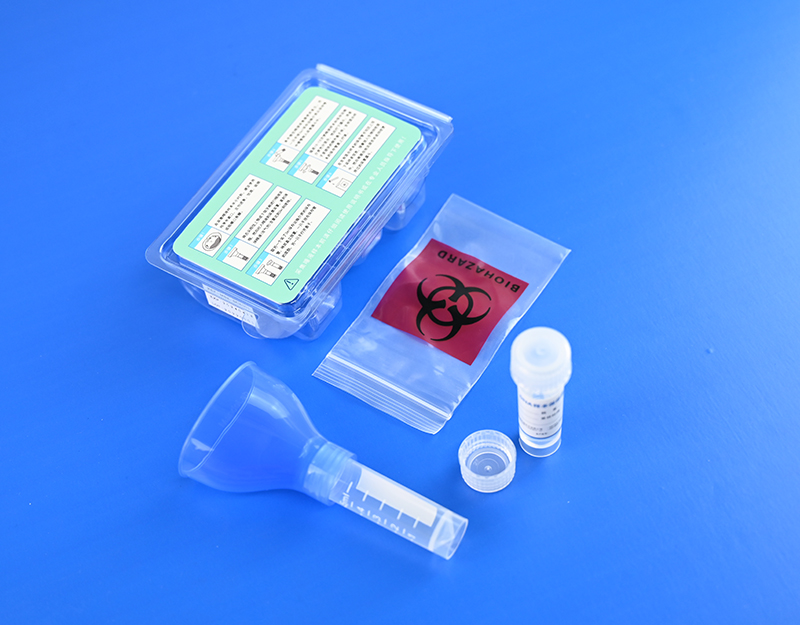How to Collect Saliva Samples? Applications of Saliva Samples in Toxicology Testing
Saliva, a biological fluid often overlooked by people, actually harbors a wealth of information. Throughout history, the value of saliva in medicine and science has gradually emerged. Nowadays, with the advancement of technology, the collection and analysis of saliva samples are playing an increasingly important role in toxicology testing. In this article, MandeLab will delve into the collection methods of saliva samples and their applications in toxicology testing, unveiling the mysteries behind this simple yet powerful biological specimen.
I. Collection Methods for Saliva Samples
The collection of saliva samples may seem straightforward, but to ensure their accuracy and reliability, strict procedures must be followed. Firstly, selecting the appropriate collection tool is crucial. The market currently offers a variety of saliva collection kit, including those based on absorbent pads and funnel-shaped collection kit. Prior to collection, it is essential for the participant to maintain oral cleanliness and avoid interference from external factors such as food, beverages, and tobacco.
During the collection process, the participant needs to naturally drip or spit saliva into the collector. To ensure the adequacy of the sample, the participant typically needs to collect saliva for a period of time, with the specific duration determined by the collector's absorption capacity and the research requirements. Once the collection is complete, the collector must be sealed and stored properly to prevent contamination or degradation of the sample.
It is worth noting that different collection methods may have an impact on the concentration of analyses in saliva. The non-invasive saliva collector developed and produced by MandeLab is capable of collecting high-purity and high-throughput cellular DNA samples. Additionally, the collected DNA samples exhibit excellent preservation time and stability.

II. Application of Saliva Samples in Toxicology Testing
The utilization of saliva samples in toxicology testing has become increasingly prevalent, with their unique advantages making them the preferred specimen in many testing scenarios. Firstly, the non-invasive and non-intrusive nature of saliva sample collection renders it highly acceptable to participants. In contrast to the collection of blood or urine samples, saliva sampling can be performed without the need for specialized personnel, significantly reducing collection costs and minimizing participant discomfort.
Secondly, saliva is rich in biomarkers that are intimately linked to the metabolism of numerous drugs and toxins. By analyzing these biomarkers in saliva, it is possible to accurately determine whether a participant has consumed specific drugs or toxins, as well as information regarding the timing, dosage, and frequency of use. Furthermore, the long half-lives of certain biomarkers in saliva samples enable the tracing of long-term drug use histories.
In practical applications, saliva samples have demonstrated immense potential in the field of toxicology testing. For instance, in drug rehabilitation centers, rapid saliva testing can assist staff in promptly assessing the recovery progress of patients undergoing detoxification. In traffic safety, on-site saliva testing can swiftly determine whether drivers are under the influence of alcohol or drugs. Additionally, in occupational safety, regular saliva testing can monitor employees' exposure to harmful substances.
III. Challenges and Prospects
Despite the numerous advantages of saliva samples in toxicology testing, their application still faces several challenges. Firstly, the relatively low concentration of biomarkers in saliva necessitates highly sensitive detection technologies. Secondly, the composition of saliva samples is susceptible to external factors such as diet and oral health conditions, which may introduce errors into the test results. Furthermore, variations in saliva secretion among individuals can also impact the outcomes of testing.
To overcome these challenges, future research efforts can be directed towards several avenues: Firstly, developing more sensitive and accurate saliva detection technologies to enhance the reliability and precision of testing. Secondly, conducting in-depth studies on the factors influencing biomarkers in saliva samples and establishing standardized collection and processing protocols. Lastly, exploring the application of saliva samples in a broader range of toxicology testing fields to expand their scope of use.
IV. Conclusion
As an emerging star in the field of toxicology testing, saliva samples are attracting increasing attention with their unique appeal. Through continuous optimization of collection methods and advancements in detection technologies, we have every reason to believe that saliva samples will play an even more significant role in future toxicological investigations. As the ancients said, "A drop of saliva can speak volumes." In the world of toxicology testing, this mere droplet may indeed reveal intricate layers of truth.

